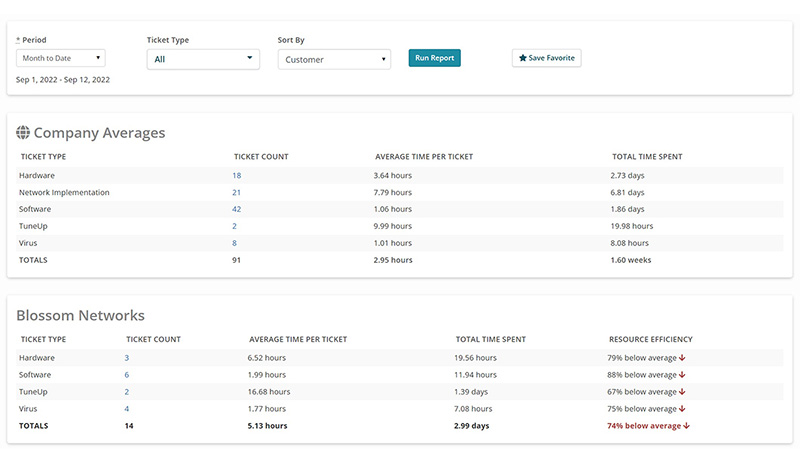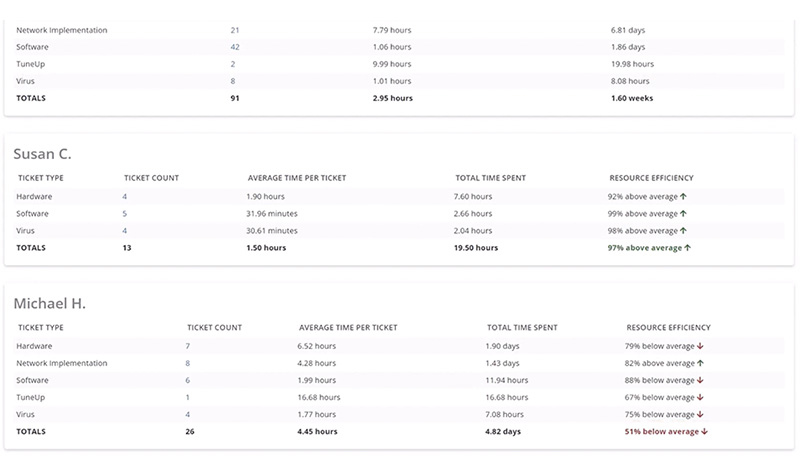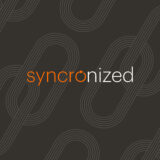Analyzing the efficiency of your MSP business is critical to managing and growing the profitability of your business. One feeds the other.
In the early days of growing your business, you might be able to rely on gut instinct. When you have 10 managed customers, it’s pretty easy to know which of those 10 are consuming the majority of your time and which are consuming the least.
But how long can you realistically trust your gut to accurately represent what’s happening? Is that at 25 managed customers? What about 100 or 500?
With a finite amount of hours in the day and no shortage of problems to work, it can be easy to push off doing the efficiency analysis you really need to do. This procrastination is all too often compounded by a lack of readily available metrics to actually measure how your business is performing.
At Syncro, we’re tackling that problem head on with the release of two new business viability reports tracking customer efficiency and technician efficiency. At the click of a button, you’ll now be able to detect strengths and weaknesses in your MSP’s performance and identify areas for improvement.
Analyzing customer efficiency reports
The simple truth is every MSP has customers earning far less than originally intended when they first qualified them, and most never even realize it. That’s precisely what customer efficiency reporting is designed to expose.
So how does it work? Both customer and technician efficiency are based on the same baseline metric: ticket ownership duration.
First, we analyze your resolved tickets to calculate your total ownership duration—how long a ticket is both in your hands and in a workable state. If a customer sends in a ticket, the clock is now ticking. If you respond to the customer and they take days to get back to you, the clock stops. The ticket is no longer in a workable state.
To be accurate, we also take into account your business operating hours, along with your holiday schedule.
We then calculate averages per ticket type as well as an aggregated average across all ticket types.
From there, we compare ticket ownership duration for each customer against your baseline. Think of this like an exception report.

Customers who vastly outperform your baselines—meaning customers who consistently take less than the average time to service—are likely your “golden geese,” or as some might call them, your VIPs.
On the opposite end of the spectrum, customers who are underperforming the baseline—consuming more of your resources than average—are your red flags.
It’s certainly possible you have one or two customers with a complexity level that far surpasses that of your average customer, so those red flags may be easy to explain away. But when you have two virtually identical customer environments with an equal number of machines or employees, it’s hard to explain why one of those may be consuming twice as much time as the other. If they’re also paying twice as much, then crisis averted. In the vast majority of cases, however, they’re not.
Customers who consume a disproportionate amount of your resources are a textbook example of inefficiencies in your business slowing your growth. Whatever you intended to earn when you first qualified these customers, it’s simply not happening. A lack of new customers isn’t the problem.
Taking action from customer efficiency reports
So now what? Now you have some hard decisions to make. If you could be reselling that time to another customer for 25-75% more, then why aren’t you? At worst, you need to be thinking about how to renegotiate this contract. If the renegotiation process doesn’t go your way and you lose the customer, that’s not actually a loss. It simply allows you to resell those hours for what they’re worth, allowing you to consume less time while earning the same amount of money.
The exceptions your customer efficiency report detects aren’t all doom and gloom, however. There are plenty of other opportunities for improvement these reports will expose.
For example, perhaps the team at an office you manage had significant staffing issues and now the makeup of their company in no way represents the makeup of the company that you originally qualified. Maybe their general IT competency has plummeted and your efficiency has plummeted right along with it.
This doesn’t mean you need to fire the customer but it does mean some level of action has to be taken. You might invest in providing them some training in areas they’re consistently opening up tickets for.
Sure, it’s still an investment you’ll have to make toward an underperforming customer, but an investment in a few hours of training may prevent several dozen hours of work throughout the course of a year. That won’t turn this customer into a golden goose, but it will certainly increase the customer’s profitability threshold.
Analyzing and taking action from technician efficiency reports
Just as you can extract insights by benchmarking customers against average ticket ownership duration, you can also benchmark technicians.
Technicians that consistently underperform your company averages are costing you money, plain and simple. But it doesn’t always mean you have a “bad” technician.

For example, perhaps it’s normal for a Tier 2 technician’s tickets to consume 50% more time than that of a Tier 1. More complex tickets take more time, after all.
In other instances, you may be training a new tech or have recently promoted a technician who’s now taking on more complex tickets and spending some extra time getting ramped.
In a great many cases, however, you’ll expose strengths and weaknesses in individual technicians that previously you may not have known existed. One may excel at networking tickets while lagging behind in diagnosing hardware problems. In other instances, you may find a Tier 1 tech vastly outperforming their counterparts because they’re simply overqualified for the role.
These aren’t problems—they’re opportunities. Maximizing the strengths of your technicians is a key to maximizing your growth potential.
Growing your profitability
At Syncro, we’re always looking for ways we can help MSPs run more profitable businesses. Our release of these new reports represents our continued commitment to making that a reality.
Not yet a Syncro partner? Start your free trial today.
Share













